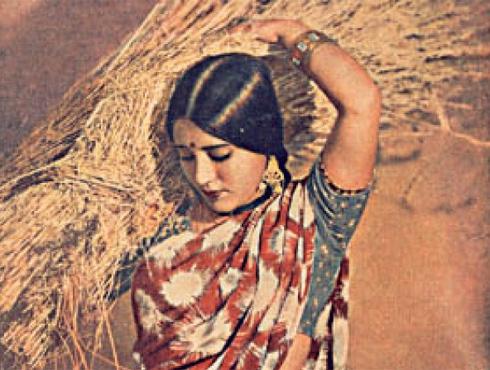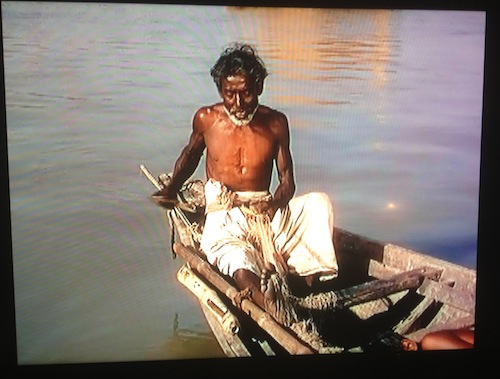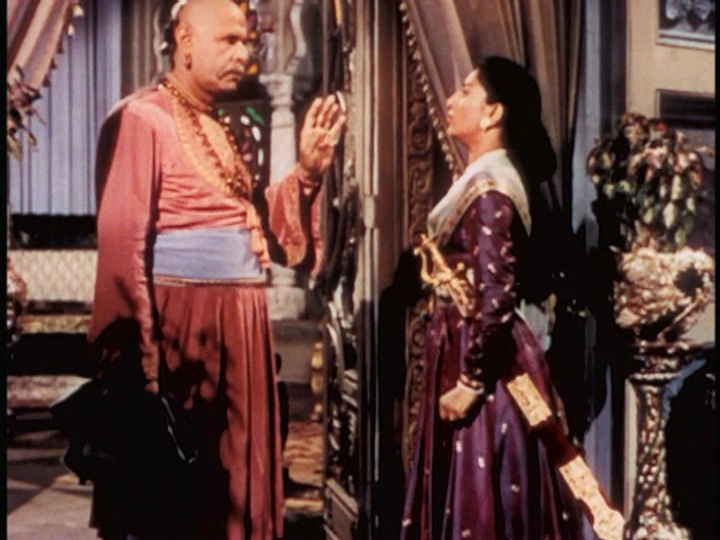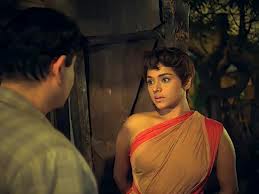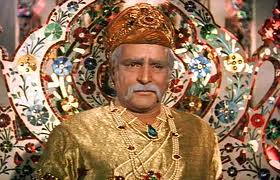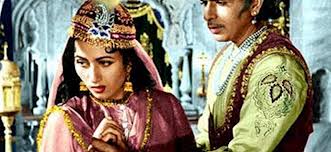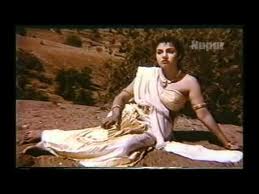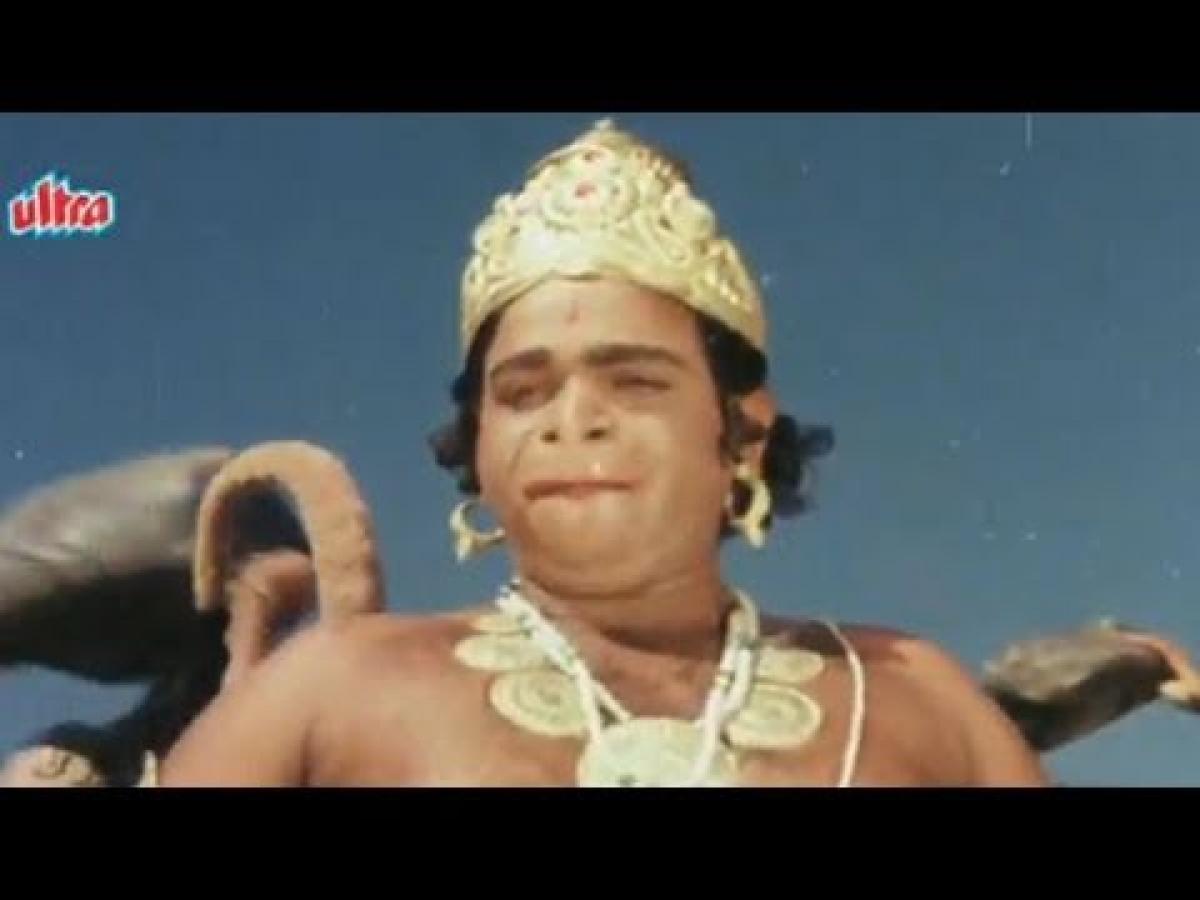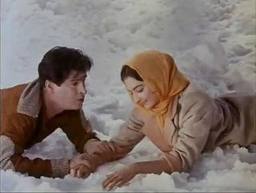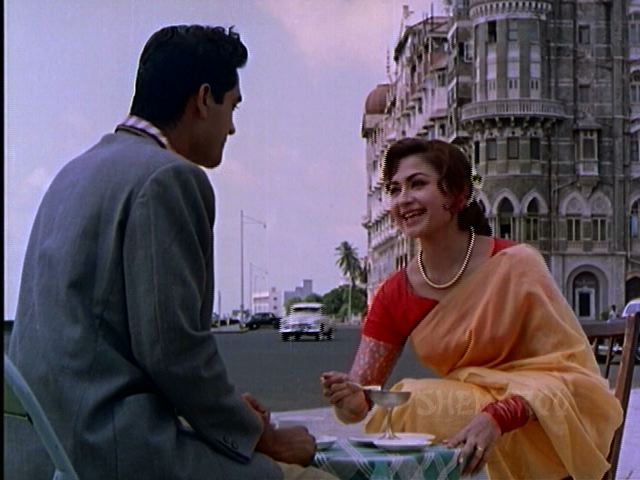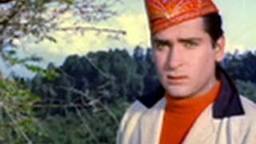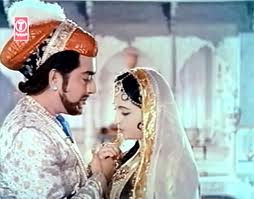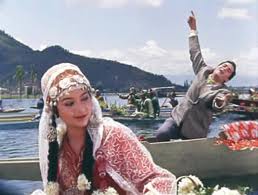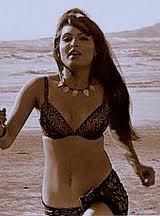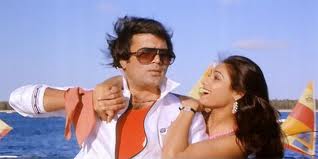Colour films in Hindi-Urdu
(→Internet myths about Hindi-Urdu cinema) |
(→‘Partly in colour’) |
||
| Line 60: | Line 60: | ||
If an Indian/ Pakistani film were 'entirely in colour' its local-level posters would, till even the late 1970s, mention this, even though by then B&W films had been gone for years. In North India the reassurance would read 'Tamaam rangeen' (entirely in colour). | If an Indian/ Pakistani film were 'entirely in colour' its local-level posters would, till even the late 1970s, mention this, even though by then B&W films had been gone for years. In North India the reassurance would read 'Tamaam rangeen' (entirely in colour). | ||
| − | ====‘Partly in colour’==== | + | ====‘Partly in colour’(colour inserts)==== |
Moguls like Mehboob Khan, V. Shantaram and Sohrab Modi (who made films in Technicolor) and producers of the next rung like Subodh Mukherji (Junglee/ 1961), FC Mehra (Professor/ 1962) and Shakti Samanta (Kashmir ki Kali/ 1964), all of who used Eastmancolor, had set a bold example. Almost all their colour films were enormously successful. | Moguls like Mehboob Khan, V. Shantaram and Sohrab Modi (who made films in Technicolor) and producers of the next rung like Subodh Mukherji (Junglee/ 1961), FC Mehra (Professor/ 1962) and Shakti Samanta (Kashmir ki Kali/ 1964), all of who used Eastmancolor, had set a bold example. Almost all their colour films were enormously successful. | ||
Revision as of 13:20, 21 June 2013
Contents
|
Colour films in South Asia: 3--(Hindi-Urdu films)
(Part 3 of 'Colour films in South Asia')
Kisan Kanya, India’s first colour film
Attempts to shoot the first Indian colour film failed when the negative for Sairhandri, directed by Rajaram Vankudre Shantaram, was ruined during processing abroad. Prabhat Film Company's “Sairandhri” was the first talkie film produced in Multicolour in 1933. However, its colour quality was not satisfactory and what could be seen was black and white.
Kisan Kanya (lit: the peasant girl; 1937/ Dir: Moti B. Gidvani; prod. Ardeshir Irani) was arguably India’s first colour film to be actually released. This story about rural poverty did not go down well with mass audiences, so colour films did not catch the public imagination—till Aan (1953).
One source(asia.isp)says that Bhavnani Productions ‘Rangeen Zamana” produced and directed by M. Bhavnani in 1948 (released as “Ajit” in 1949) was the first feature film produced in Kodachrome and blown up to 35mm. It has not been possible to get independent corroboration of this claim, but if true this is very impressive because Kodachrome was a superior (and expensive) technology, as good as the best in the world.
Technicolor
Technicolor in India
Aan, a Dilip Kumar- Nimmi starrer by Mehboob Khan, was the first Indian film in Technicolor, the most expensive colour format of that era, or ever. It was shot in 16 mm and later blown up to 35 mm. It was a landmark success.
V. Shantaram’s Jhanak Jhanak Payal Baaje (1955), Mehboob Khan’s Mother India (1957) and V. Shantaram’s Navrang (1959), all in Technicolor, too, were the biggest hits of their respective years. Only Sohrab Modi’s lavishly produced Technicolor Jhansi Ki Rani (1956) fared badly at the box office.
Technicolor’s run of success continued into the 1960s, but not as triumphantly. Gunga Jamuna, Mere Mehboob and Sangam were, again, the biggest hits of their respective years. But Son of India, Leader, Palki and Mera Naam Joker tanked.
So, Technicolor was no longer a guarantor of success. Besides, Technicolor’s parent company, Eastman Kodak, had launched Eastmancolor.
The Technicolor process
Technicolor was expensive because the image being photographed (i.e. the light coming from this image) had to pass through three strips of black-and-white film. Together these three strips formed a rich colour image. This colour went by the brand name Technicolor in the case of moving pictures and Kodachrome when used for still photography.
The camera’s lens split the light coming from the actors and the background into two beams, one of which went through a green filter and the other through a magenta filter. The topmost strip could receive only blue light and recorded blue images. The green filter obstructed red and blue light; the second strip received this image. The magenta filter kept green light out; the third strip recorded the residual colours.
The cyan, magenta and yellow dye images from these three negatives were superimposed on a single strip of film, which resulted in sharp, nuanced Technicolor images.
The historical benefit of this complicated and expensive technology is that old Technicolor prints (notably, Aan itself) retain their original colours, while pictures shot on cheaper colour films have faded or lost one shade or even one or more colours. The original colours of Mughal e Azam’s two Technicolor sequences remain vastly crisper, more detailed and lustrous than the bulk of the film, which was colourised from black and white in 2004.
GevaColor
Eastmancolor
Junglee (1961) was the first Indian film in Eastmancolor, a colour technology made by the same company as Technicolor, but less complex and, therefore, less expensive. On the other hand Eastmancolor was vastly more satisfying than the even cheaper Gevacolor and Orwocolor. (Fujicolor was the choppy and downmarket colour negative of the 1970s and early '80s. It was Souten [1983] that introduced India to the lavish, new Fujicolor, though Yeh Nazdeekiyan (1982), the year before, too, had indicated that Fujicolor had changed.)
Eastmancolor films after Junglee included Professor and Taj Mahal (both 1963). By the mid-1960s Hindi-Urdu audiences started demanding colour. Dosti, a low budget weepie that touched the nation’s hearts (1964) and Saheli (1965) were, arguably, the last hits in black and white. Haqeeqat (1964) and Shaheed (1965) had huge cult followings, especially among nationalistic urban youths but neither was a major mainstream commercial film.
'Songs and dances in colour' vs. 'Tamaam rangeen'
In the 1950s,1960s and early 1970s many black and white films--including respected films by Satyajit Ray. K. Asif and Mrinal Sen of India, and A Tarkovsky of the USSR--had a few reels in colour. If such a film was Indian or Pakistani and of the commercial kind its posters would read 'Songs and dances in colour.'
If an Indian/ Pakistani film were 'entirely in colour' its local-level posters would, till even the late 1970s, mention this, even though by then B&W films had been gone for years. In North India the reassurance would read 'Tamaam rangeen' (entirely in colour).
‘Partly in colour’(colour inserts)
Moguls like Mehboob Khan, V. Shantaram and Sohrab Modi (who made films in Technicolor) and producers of the next rung like Subodh Mukherji (Junglee/ 1961), FC Mehra (Professor/ 1962) and Shakti Samanta (Kashmir ki Kali/ 1964), all of who used Eastmancolor, had set a bold example. Almost all their colour films were enormously successful.
And yet even top budget films continued to be made in B&W till the mid-1960s. It is known that producer K. Asif made Mughal e Azam mostly in B&W because he could not afford a greater number of colour sequences. In the early 1960s the economics of colour films do not seem to have been very attractive, even though very few colour films had flopped. (The only colour flops were Jhansi ki Rani and Leader—both commercial; and Kisan Kanya, Pardesi, Pyar ki Pyas and Son of India—all arthouse.)
Obviously because of high costs two of the Big Three stars, Raj Kapoor and Dev Anand, had their first entirely-in-colour films released as late as in 1964 and 1966 respectively. (In most of the 1960s Rajendra Kumar was arguably no.4 and Shammi Kapoor perhaps no.5, though by 1966 or so Rajendra ‘Jubilee’ Kumar was reportedly the highest paid star and remained so for a few years.)
A few reels in colour, thus, was the compromise. These normally were reels with songs, dances or spectacle. Even the Dev Anand-starrer Teen Devian (1965) included only some colour sequences. Pakistan’s superstar Waheed Murad’s Eid Mubarak (1965) was Pakistan's first film with a few colour scenes, even though (East) Pakistan had made an entirely in colour film the year before. (The same had happened in India: the ‘partly in colour’ trend came after films had been made entirely in colour.)
Nasir Hussain, a major producer-director, was one of the first to use colour. Phir Wohi Dil Laya Hoon (1963) was India’s fourth Eastmancolor film, and a hit. Teesri Manzil (1966), another success, followed in Eastmancolor. And yet as late as in 1967 he made Baharon Ke Sapne in B&W (with two sequences in colour) because it was a serious film about educated unemployed youths, and hence not likely to attract mass audiences.
The ‘partly in colour’ trend goes back at least as far back as Nagin (1954), an A-list B&W fantasy film with a few reels in Gevacolor. Nadodi Mannan (Tamil/ 1958), also a costume drama and fantasy film, included a colour sequence. Mughal e Azam (1960), the biggest-budget film of its time, had to include colour for the same reason: it was a historical spectacular and costume drama with ornate sets encrusted with faux gems.
By the early 1960s the correlation between the budget of the film and colour weakened further. Bombay Ka Chor (1962) was a B&W, B-plus film. However, because audiences wanted colour its producers gratuitously included a colour sequence, quite unrelated to the film’s plot, called ‘Holiday on Ice.’ Hawa Mahal (1962), a C-budget fantasy, was partly in colour.
Thus the ‘fantasy’ element was almost important as costs when it came to shooting a film in colour. It is notable that four of the first five Technicolor films in Hindi-Urdu; the first Technicolor film in Tamil and the first colour film in Telugu were all period films and costume dramas.
When maestro Satyajit Ray made Goopy Gyne Bagha Byne (1969), a fantasy film, he included some colour sequences.
Arthouse films, while valiantly insisting that B&W was artistically superior, had started using patches of colour, too. Notable among them was Mrinal Sen’s Padatik (1973). In the USSR Andrei Tarkovsky’s B&W biopic Andrei Rublev (1966) ended with Rublev’s paintings in colour.
Colour films gradually edge out black and white
The megastar of the 1950s and the early ’60s, Dilip Kumar, did not act in a black and white film after 1961; the highest paid star of the mid-1960s, Rajendra Kumar, followed suit. By the late 1960s the only black and white films featuring major actors were serious films meant for arthouses (e.g. the Raj Kapoor starrer Teesri Qasam/ 1967 and the Nargis-starrer Raat Aur Din/ 1967) or those that had got delayed in the making.
Shammi Kapoor is the star associated with the introduction of Eastmancolor in India but even he had an A-category commercial black and white film Budtameez as late as in 1966. The Dev Anand starrer Kahin Aur Chal (1968) was perhaps the last A-list commercial Hindi-Urdu film in black and white.
Black and white continued into the early 1970s, with art films like Dastak (1970) and Ashad Ka Ek Din (1971).
Art films have been in colour since at least Satyajit Ray’s Kanchanjangha (1962/ Bengali/ Eastmancolor), but then India’s greatest maestro had the world as his market. Even he did not get back to an entirely-in-colour film for another 11 years, till 1973 (Ashani Sanket), after which he never went back to black and white. (Kanchanjangha is the spelling used on the cover of the DVD, but Kanchanjungha is the subtitle when the film's name, which is given only in Bengali, appears in the film itself.)
In Hindi-Urdu cinema, too, art films had been made in colour since Chetna (1970). However, it was Blaze films’ Eastmancolor Ankur (The Seedling) (1974), lavishly produced by the standards of Indian art cinema, that announced that art films need not be micro-budget. After that no Hindi-Urdu film, not even an art film, was made in black and white.
Internet bloopers about Hindi-Urdu cinema
A crowdsourced article (Wikipedia) claims that Saraswatichandra (1968) was ‘the last Bollywood movie to be made in black and white.’ This is as untrue as other crowdsourced Internet myths such as that Kagaz ke phool was India’s first CinemaScope film (no, Pardesi was), or Sholay was India’s first 70mm film (Around the World was) or that Dev Anand’s Guide was released in 1965 (the summer of 1966 is the correct date) or that 'Jhansi ki Rani' was India's first Technicolor film (Aaan was).
Even Dastak, the last successful (by art film micro-budget standards) B&W film in Hindi-Urdu, was not the last 'Bollywood movie' to be made in black and white. Art films like Sara Akash (1969, but actually released in 1971), Uski Roti (1970) and Ek Adhuri Kahani (1972) continued to be made in B&W well into the 1970s. Commercial 'Bollywood movies,' albeit B-budget, [Bandish (1969), Simla Road (1969)] continued to be made well after Saraswatichandra, which was not an A-budget film either.
The great Satyajit Ray and Mrinal Sen were making B&W films in Bangali till the mid-1970s.
See also
Colour films in South Asia: 1—South Asia as a whole.
Colour films in South Asia: 2 (Indian Cinema)—India as a whole.
Colour films in South Asia: 3-- Hindi-Urdu films.
